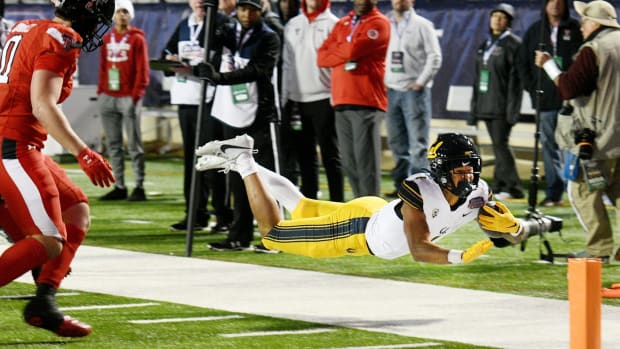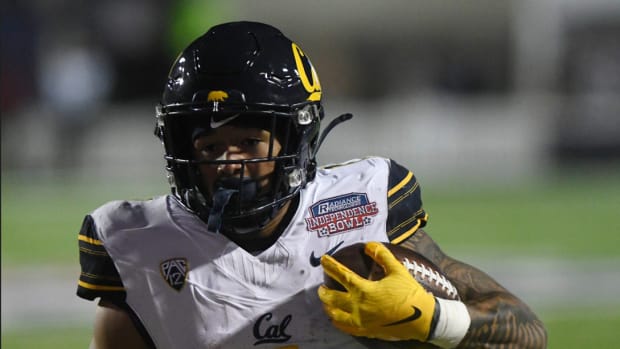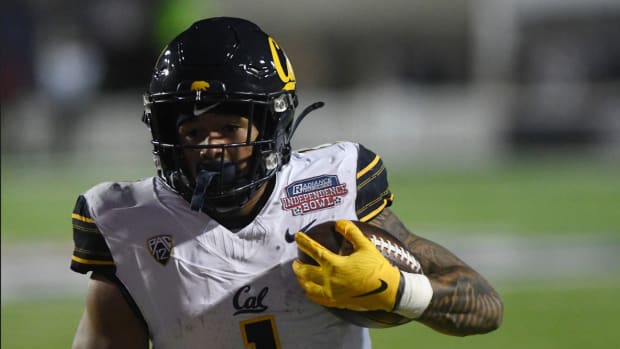SF Chronicle: Decision on Playing Football a ‘Partisan Cultural Skirmish’
Never has the term "political football" been more appropriate.
The editorial page of the San Franisco Chronicle on Friday took on the controverisal issue of whether college football should be played during the COVID-19 pandemic, and in the second paragraph it noted what has become increasing obvious.
"[T]he parallel debate over whether to play the college game this fall has devolved from public health debate to partisan culture skirmish."
There had been hints that this issue was tied to political leanings, and it became chrystalized when President Trump this week came out on the side of playing college football in the fall.
Certainly the passion for college football by a region's residents seems to play a role in the decision of major football conferences on whether to play in the fall, as the Chronicle editorial notes:
"Citing the danger to student-athletes and their communities, two major college football conferences, the San Francisco-based Pac-12 and Midwest-based Big Ten, canceled fall football this week. Still holding out hope of going forward with the season, however, are the three major conferences more rooted in Southern hotbeds of football fanaticism and, not incidentally, coronavirus transmission."
However, there is another correlation that has become evident: The choice runs along political lines.
The West Coast states and Colorado are solid blue states, as defined by a New York Times map, and that's where nine of the 12 Pac-12 schools reside. The Pac-12 opted to cancel fall football, with the hope of playing in the spring.
The Midwest states, where most of the Big Ten schools are located, tend toward purple as a group -- somewhat blue and somewhat red, but probably more blue than red on most issues. The Big Ten also canceled fall football with the hope of playing in the spring.
The fact that the Midwest tends toward the red side more than West Coast states do may be why one oddsmaker gives the Big Ten a better chance of playing spring football than the Pac-12. But that may be extrapolating this thing too far.
But what is clear is the three Power 5 conferences that are still planning to play fall football -- Southeastern Conference, Atlantic Coast Conference and Big 12 -- are located primarily in red states.
Every Big 12 school and every SEC school is located in a red state, as defined by the New York Times map, and, yes, we're calling Florida a red state, based on what its Republican governor said recently:
The ACC is a bit of mixed bag, because five of its 16 schools are located in blue or purple states, but when we think of the traditional ACC alignment we typically think of North Carolina, which houses four ACC teams, and South Carolina, home to the only ACC team that really matters, Clemson. Those states are red, so the ACC is a red region.
So if you tend toward Republican ideals, you say, "Go play, we know the risks," and if you are more attached to the Democrats' philosophies, you say, "Don't play, it's not safe."
From this map below provided by Brett McMurphy of Stadium, you can see which states have schools still planning to play fall football. The only school in the West still trying to play this fall is BYU, which is in Utah. And Utah is a red state tucked between two blue states.
Like I said, a political football.
Follow Jake Curtis of Cal Sports Report on Twitter: @jakecurtis53
Find Cal Sports Report on Facebook by searching: @si.calsportsreport
Click the "follow" button in the top right corner to join the conversation on Cal Sports Report on SI. Access and comment on featured stories and start your own conversations and post external links on our community page.





